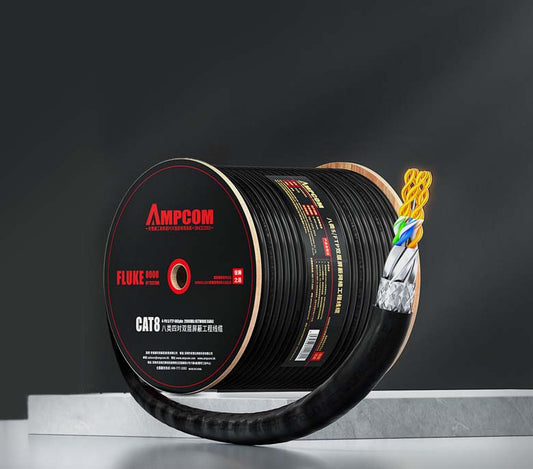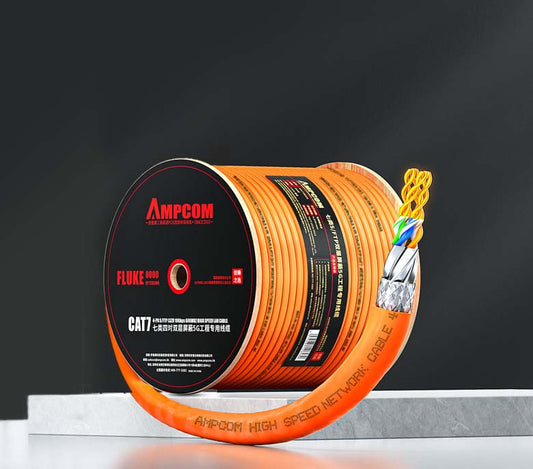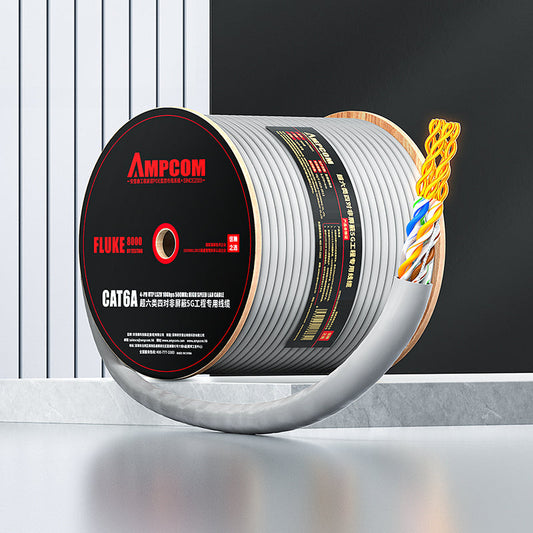Network jumpers play a critical role in establishing seamless, high-performance network infrastructures. From offices to data centers, these cables are used to connect various devices and network components, ensuring efficient data transfer and stable connectivity. Although network jumpers seem simple, their quality and performance have a profound impact on the overall efficiency of the network. In this article, we will explore the role of network jumpers, how to properly test them, and why testing is crucial for ensuring reliable connectivity and high-speed network performance.
Understanding Network Jumpers and Their Role in Modern Networking
Network jumpers, or patch cables, are short cables typically used to connect different network devices such as computers, routers, switches, and more. These cables come in various configurations, including S/FTP (Shielded Foiled Twisted Pair), UTP (Unshielded Twisted Pair), and STP (Shielded Twisted Pair), each with unique performance characteristics suited to different environments.
The primary function of network jumpers is to ensure stable connections between devices, especially in high-speed data transfer environments, where the choice of jumper directly affects network stability and transfer speed. For network engineers and professionals, selecting the right type of jumper is essential. Proper selection minimizes signal interference, ensures the correct bandwidth capacity, and guarantees network stability.
Types of Network Jumpers:
S/FTP (Shielded Foiled Twisted Pair): These cables provide extra shielding around each pair and an overall foil shield, which effectively reduces external interference, making them ideal for long-distance transmission or environments with high electromagnetic interference (EMI).
UTP (Unshielded Twisted Pair): The most common type of network jumper, suitable for most low-interference environments. UTP cables are more cost-effective because they lack additional shielding, but they may not perform well in high-interference environments.
STP (Shielded Twisted Pair): STP cables have shielding around each pair of wires, which reduces crosstalk and external interference, but their interference protection is not as robust as S/FTP cables.
When selecting network jumpers, key factors to consider include the type of shielding, insulation material, conductor material, and the length of the cable. A high-quality jumper can significantly improve network performance, reduce downtime, and ensure efficient system operation.
The Importance of Testing Network Jumpers
The quality of network jumpers directly impacts network stability and data transmission efficiency. Without proper testing, issues such as signal degradation, connection failures, and data loss may arise, ultimately lowering network performance. To ensure the smooth operation of the network, testing network jumpers is an essential step.
In this regard, Fluke is a leading provider of testing equipment, with the Fluke Versiv Tester being one of the most commonly used tools for network testing. The Fluke Versiv Tester helps to thoroughly assess the performance of network jumpers and ensures that they meet industry standards. The device tests multiple key performance parameters, such as NEXT (Near-End Crosstalk), ACR-F (Attenuation-to-Crosstalk Ratio - Far End), and Return Loss (RL), ensuring that the cable performs optimally in real-world network environments.
Fluke Testing Features:
- NEXT (Near-End Crosstalk) Testing: This test measures interference between adjacent pairs of wires within the cable. Low NEXT values indicate minimal interference, which is crucial for high-speed data transfer. The lower the NEXT value, the more stable the signal is, minimizing the impact of external interference.
- ACR-F (Attenuation-to-Crosstalk Ratio - Far End) Testing: ACR-F testing assesses the quality of the signal at the far end of the cable. Higher ACR-F values indicate that the signal has not been significantly attenuated during long-distance transmission, making this test ideal for long-range network applications.
- Return Loss (RL) Testing: Return Loss measures the proportion of signal that is reflected back due to impedance mismatches. A higher return loss means less signal reflection, improving network performance and reducing packet loss.
The Fluke Tester provides graphical results, offering engineers clear insights into the cable's performance at various frequencies and bandwidths. This precise testing ensures that network jumpers meet the requirements of high-bandwidth applications such as video conferencing, large data transfers, and cloud computing, ensuring the network operates efficiently and effectively.
Why Fluke is the Industry-Leading Testing Tool
Fluke is a globally recognized brand known for its precision and reliability in testing equipment. In the field of network testing, Fluke offers a range of high-quality tools that assist engineers and technicians in performing comprehensive diagnostics and verification of network infrastructure. The Fluke Versiv Tester stands out as one of the best tools, offering a broad range of testing capabilities and a user-friendly interface, making it the tool of choice for many enterprises and data centers.
The accuracy and versatility of Fluke devices make them an essential tool for network engineers and maintenance personnel. By using Fluke testers, engineers can ensure that all cables and connections meet industry standards, reducing the likelihood of network failures, and improving the overall stability and speed of the entire system.
Conclusion: Ensuring Optimal Network Performance with Reliable Jumpers
Although network jumpers are just a small component of the network infrastructure, their quality and performance are critical to the overall efficiency and stability of the network. By conducting proper testing, especially with industry-standard tools like the Fluke Versiv Tester, you can ensure that the jumpers meet strict performance standards, minimizing downtime and optimizing data flow.
Whether you are upgrading an existing network or setting up a new one, never underestimate the importance of selecting high-quality, well-tested network jumpers. A properly tested and optimized network will deliver greater reliability, speed, and efficiency for all connected devices. By making informed choices in cable selection and conducting thorough tests, you will lay a solid foundation for your network's long-term success.



